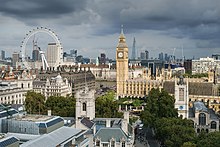
Human settlement
Community of any size, in which people live / From Wikipedia, the free encyclopedia
Dear Wikiwand AI, let's keep it short by simply answering these key questions:
Can you list the top facts and stats about Human settlement?
Summarize this article for a 10 years old
In geography, statistics and archaeology, a settlement, locality or populated place is a community of people living in a particular place. The complexity of a settlement can range from a minuscule number of dwellings grouped together to the largest of cities with surrounding urbanized areas. Settlements may include hamlets, villages, towns and cities. A settlement may have known historical properties such as the date or era in which it was first settled, or first settled by particular people. The process of settlement envolves human migration



| Ekistics |
|---|
.jpg/230px-Skyscrapers_of_Shinjuku_2009_January_(revised).jpg) |
|
|

In the field of geospatial predictive modeling, settlements are "a city, town, village or other agglomeration of buildings where people live and work".[1]
A settlement conventionally includes its constructed facilities such as roads, enclosures, field systems, boundary banks and ditches, ponds, parks and woodlands, wind and water mills, manor houses, moats and churches.[2]
An unincorporated area is a related designation used in the United States.